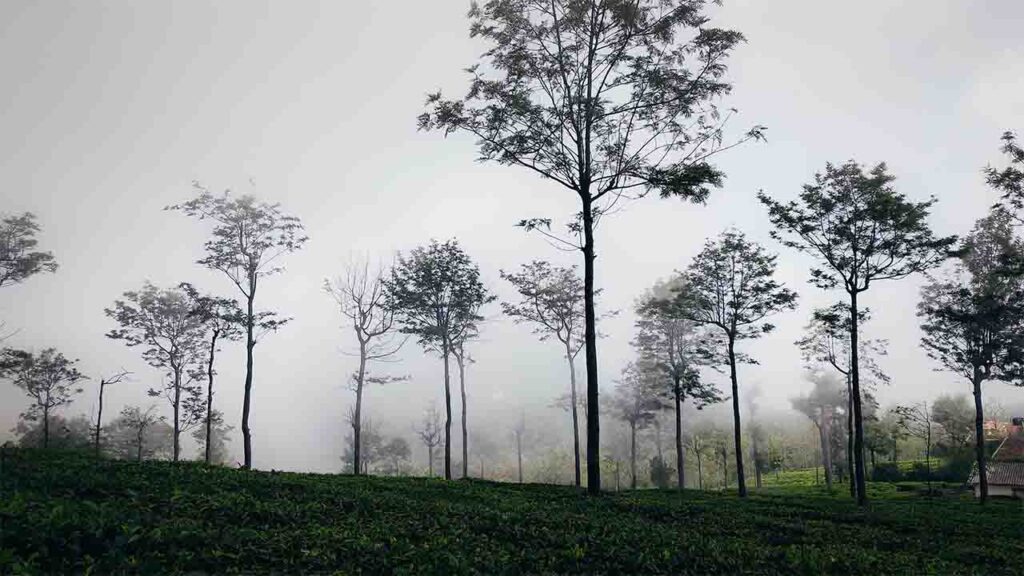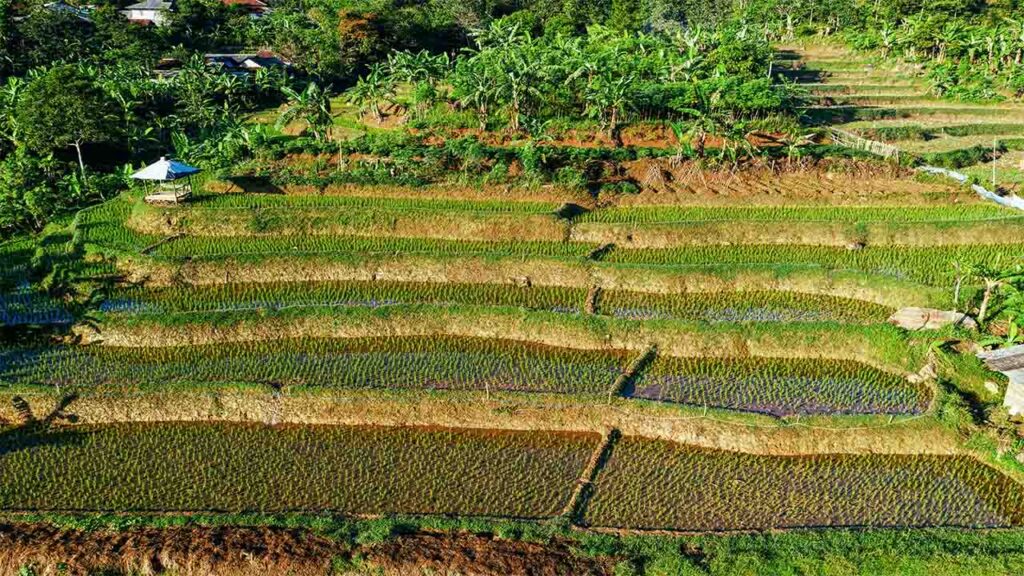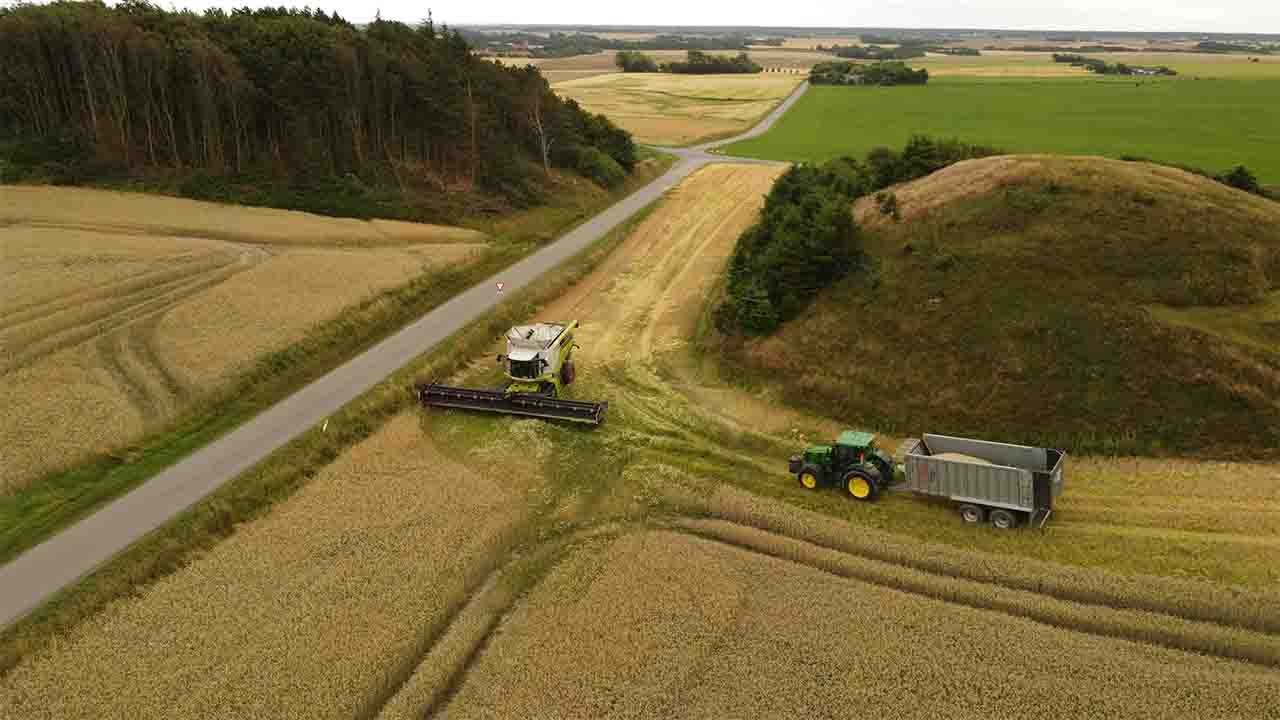In the global effort to address climate change, agriculture has emerged as a critical focus for both adaptation and mitigation strategies. Climate-smart agriculture (CSA) seeks to enhance the resilience of agricultural systems in the face of climate change impacts.
Overview
Climate change and food insecurity stand among the most crucial interlinked development challenges in the world at the moment. The more food insecurity arises the more it influences the climate.
Basically, food systems are one of the primary causes for Methane emission and the agrifood sector consumes 70% of Fresh water. Today, the global agrifood system is responsible for about one-third of all emissions and biodiversity loss.
The increase of food production meant expanding agriculture and using up natural resources in non-sustainable manners. According to World Bank Data, the global food demand would increase to feed a predicted population of 9.7 billion people around the world by 2050.
Agriculture stands as the main driver behind deforestation, posing a threat to untouched ecosystems like the Amazon and the Congo Basin. Without intervention, emissions stemming from food systems will continue to climb, fueled by the escalation in food production.

What is Climate-smart Agriculture
Climate-smart agriculture is an approach to manage farming,fisheries and livestock that aims to address interlinked challenges of climate change and food security. The primary aim of the CSA is to achieve its triple objectives:
- Productivity- Reinforcing both crop and livestock production, while simultaneously enhancing farm profitability. This concerted effort aims to contribute to greater food security on a broader scale.
- Adoption to climate change – Climate-smart agriculture strives to fortify agricultural infrastructure against the detrimental impacts of global warming. This involves implementing measures to reduce vulnerability to climate-related hazards such as floods, droughts, and extreme heat.
- Mitigate the emission – One of the central objectives of climate-smart agriculture is to diminish the emission of greenhouse gases resulting from agricultural practices, which includes mitigating methane emissions from livestock, paddy rice cultivation, and the application of synthetic fertilizers.
CSA Strategies
CSA actions are not only limited to farms, but also they extend beyond the farm including policies, institutions, technologies and investment. CSA strategies can not be universally pursued, rather they contextualize locally. Yet there are several practices that can be followed in a common ground.

Enhanced crop varieties and diversification
Cultivating crops with greater resistance to temperature and precipitation extremes can aid farmers in mitigating the effects of global warming on crop yields. With agricultural expansion into previously unsuitable terrain becoming increasingly common, the demand for climate-resilient crops is escalating.
To boost harvest yields and enhance farms’ resilience to climate change, crop varieties can be prioritized with improved characteristics, such as disease tolerance or shorter growth cycles.
Conservation Agriculture
Conservation agriculture is a soil management approach grounded in three core principles: crop rotation, minimal tillage (or no tillage when possible), and the maintenance of mulch and soil cover. These methods promote resilience to climate change in agriculture by improving soil health, reducing erosion, and enhancing water absorption and land drainage.
Water Management
Precision irrigation, drip irrigation, and rainwater harvesting exemplify effective climate-smart agriculture strategies aimed at optimizing water consumption efficiency and mitigating negative environmental impacts. During periods of drought or erratic precipitation, these approaches ensure crops receive adequate water while minimizing wastage.
Agroforestry
Agroforestry involves growing trees alongside crops or livestock. Trees provide shade and windbreaks, enhance nutrient cycling for nearby crops or animals, and sequester carbon dioxide emitted from agricultural activities. By integrating trees and shrubs into farmland to enhance biodiversity and soil fertility, agroforestry systems contribute to the creation of more resilient agricultural landscapes.
Benefits of Adopting
Adoption of climate smart agriculture offers a wide range of benefits for both farmers and the environment.
- Resilience: Climate-smart agricultural practices help farmers adapt to the impacts of climate change, such as shifting weather patterns, extreme events, and changing pest and disease pressures.
- Increased productivity: By improving soil health, water management, and crop resilience, climate-smart agriculture can enhance agricultural productivity and crop yields, even in the face of climatic challenges.
- Promote environmental protection: Climate-smart agriculture contributes to environmental protection by employing sustainable practices that minimize pollution and other hazards. Conservation farming prevents soil erosion, and protects local ecosystems. Efficient water management reduces unnecessary water consumption. Agroforestry systems sequester carbon dioxide from the atmosphere, helping mitigate climate change.
Challenges in Adopting
Despite the Benefits, it is challenging to implement the CSA Strategies successfully at the ground level, mostly in rural areas in developing countries. Many of the challenges occurred due to:
- Lack of Knowledge and Awareness: Many farmers, despite their interest in adopting climate-smart practices, may struggle due to limited access to information and awareness about established approaches.
- High Initial Costs: The adoption of climate-smart agricultural practices often entails significant upfront expenses, such as investing in costly agricultural technology or infrastructure. These expenses can be prohibitive for many farmers, particularly smallholders with limited financial resources.
- Market Barriers: The market for climate-smart agricultural products is still relatively small, posing challenges for farmers in finding customers and generating profits. Additionally, farmers may struggle to recover their initial investment in implementing climate-smart practices, making it difficult to ensure profitability.
- Policy and Regulatory Obstacles: Some countries and regions may have policies and regulations that hinder the adoption of climate-smart agriculture. This could include bans on certain technologies or activities, as well as a lack of government funding and technical support for implementing climate-smart practices.
While climate-smart agriculture won’t single-handedly solve the issue of climate change, it does offer a practical and effective means of assisting farmers who are most severely affected by the climate crisis. By implementing climate-smart practices, these farmers can better cope with the challenges posed by changing weather patterns and extreme events, ultimately improving their livelihoods and resilience to climate-related risks.








